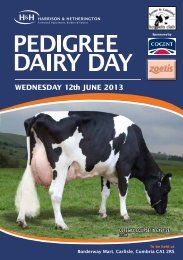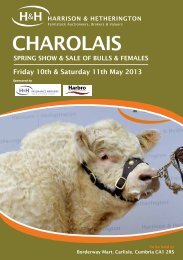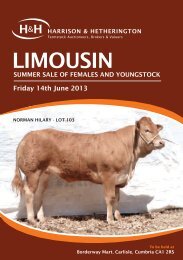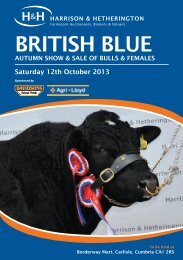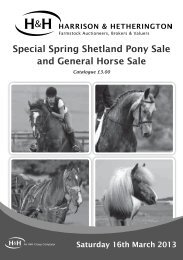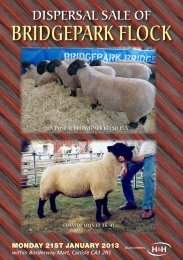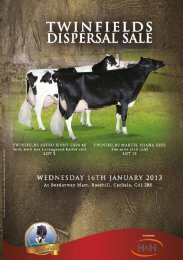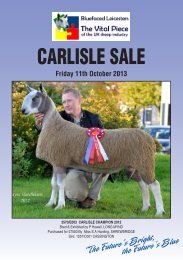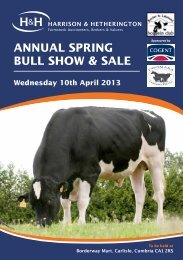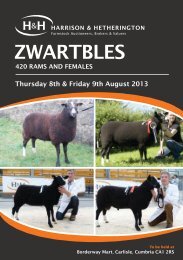Create successful ePaper yourself
Turn your PDF publications into a flip-book with our unique Google optimized e-Paper software.
11UNDERSTANDING THE BREEDPLAN PERFORMANCE RECORDINGINFORMATION IN THIS CATALOGUEOnly British Simmental GROUP BREEDPLAN EBVs or INTERIM EBVs with Accuracy (Acc) can be validlycompared between herds.ESTIMATED BREEDING VALUES (EBVS)The EBV is the best estimate of an animal's genetic merit for that trait and they are to beused as a tool to assist in the selection of sires, the visual appearance remains veryimportant.ACCURACYAn accuracy value is presented with every EBV and gives an indication of the amount ofinformation that has been used in the calculation of that EBV. The higher the accuracy thelower the likelihood of change in the animal's EBV as more information is analysed for thatanimal or it's relatives.CALVING EASECalving Ease EBVs are based on calving difficulty scores, birth weights and gestation lengthinformation. More positive EBVs are favourable and indicate easier calving.DIR: Direct calving ease indicates how this animal influences the birth of its progeny.Calving Ease (DIR) EBVs are estimates of genetic differences in the ability of a sire’s calves tobe born unassisted from 2 year old heifers. The EBVs are reported as differences in thepercentage of unassisted calvings.Higher, more positive, Calving Ease (DIR) EBVs are more favourable. For example, a bull withan EBV of +5.0% would be expected, on average, to produce 3% fewer difficult calvings from2 year old heifers than a bull with an EBV of –1.0% (6% difference between the sires, thenhalved as they only contribute half the genetics). Cow condition is a significant factor on theability and ease of calving.DTRS: Daughter’s calving ease indicates how well the animal produces daughters that haveeasier calving.Calving Ease (DTRS) EBVs are estimates of genetic differences in the ability of a sire’sdaughters to calve at 2 years of age without assistance. The EBVs are also reported asdifferences in the percentage of unassisted calvings.Higher, more positive, Calving Ease (DTRS) EBVs are more favourable. For example, a bullwith an EBV of +4.0% would be expected to on average produce daughters that have 3% lesscalving problems when calving at 2 years of age than the daughters of a bull with an EBV of –2.0%. Continued use of sires with easy calving daughters may reduce the size of the cowsand average pelvic area in the herd



